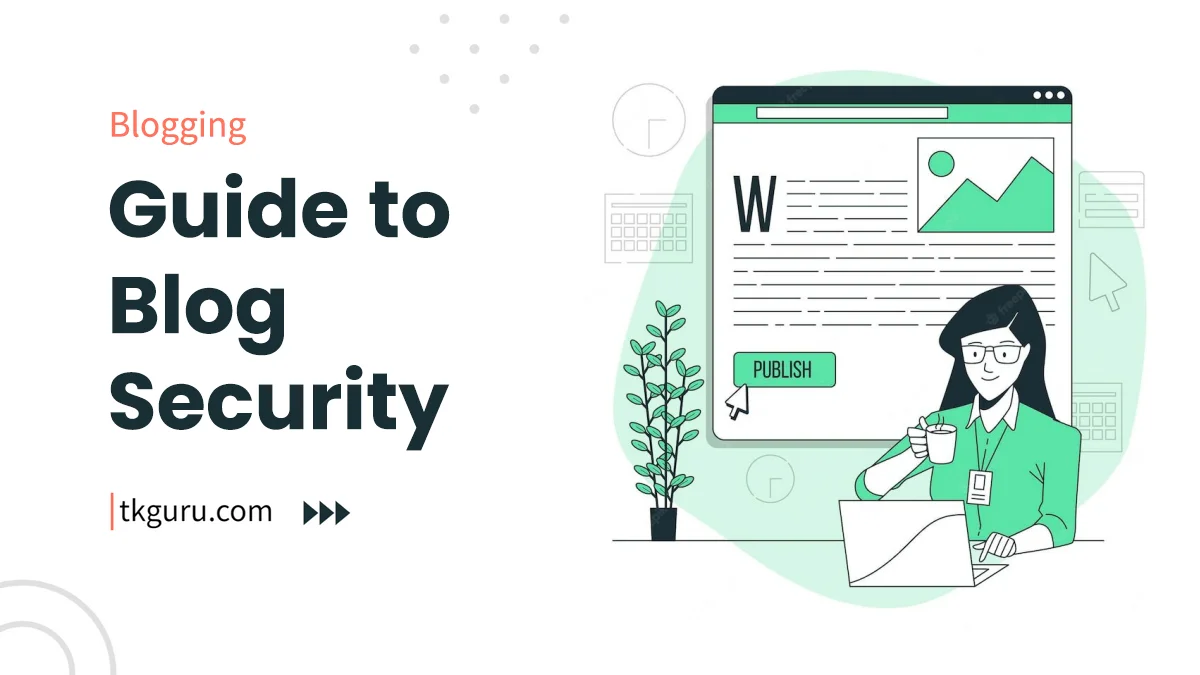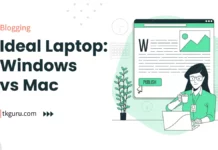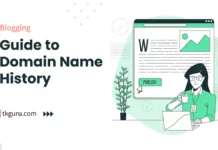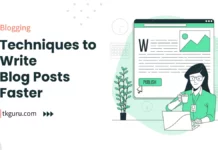Advertisements
Ratings

blog-securityBlog Security 2023 – In the dynamic digital landscape, ensuring the security of your blog is no longer optional—it’s a necessity.
With the increasing prevalence of cyber threats like hacking, data breaches, and malware attacks, safeguarding your blog and user data demands proactive measures.
This comprehensive guide is designed to equip you with a comprehensive array of strategies to fortify your blog’s security, cultivating an environment of trust and safety for both you and your readers.
Contents
- 1. Understanding Blog Security Threats
- 2. Assessing Your Current Security Measures
- 3. Implementing Strong Authentication Practices
- 4. Keeping Software and Plugins Updated
- 5. Securing Your Hosting Environment
- 6. Installing Security Plugins
- 7. Securing User Accounts
- 8. Backing Up Your Blog Regularly
- 9. Protecting Against Malware and Hacking Attempts
- 10. Encrypting Data Transmission
- 11. Educating Yourself and Your Team
- 12. Creating an Incident Response Plan
- Conclusion
1. Understanding Blog Security Threats
When delving into the world of blog security, it’s essential to grasp the potential threats that loom in the digital shadows.
| Threat | Description |
|---|---|
| Hacking | Unauthorized access to your blog’s backend can lead to data breaches and manipulation |
| Malware | Malicious software can infiltrate your blog, stealing sensitive data or causing damage |
| Data Breaches | Unauthorized access to user information could result in privacy violations |
| DDoS Attacks | Distributed Denial-of-Service attacks can cripple your blog’s functionality |
2. Assessing Your Current Security Measures
Conducting a thorough security audit is the first step in evaluating and bolstering your blog’s defenses.
| Aspect | Steps to Take |
|---|---|
| Existing Plugins | Assess your current security plugins and consider their effectiveness |
| User Roles | Review and refine user roles to minimize access privileges |
| Backup Strategy | Evaluate your backup plan, ensuring it’s reliable, comprehensive, and up-to-date |
3. Implementing Strong Authentication Practices
A solid foundation of authentication practices can be the difference between security and vulnerability.
| Practice | Explanation |
|---|---|
| Strong Passwords | Craft intricate passwords combining letters, numbers, and symbols |
| Two-Factor Authentication | Integrate 2FA for an additional layer of authentication |
| Password Managers | Utilize password managers to generate and securely store login credentials |
4. Keeping Software and Plugins Updated
Consistent updates act as a virtual shield, guarding against potential vulnerabilities.
| Aspect | Best Practices |
|---|---|
| Blogging Platform | Regularly update your blogging platform to implement the latest patches |
| Plugins and Themes | Routinely update plugins and themes, and purge outdated or unused ones |
| Compatibility Checks | Confirm updates won’t disrupt your existing setup by assessing compatibility |
5. Securing Your Hosting Environment
Choosing the right hosting environment forms a vital component of your blog’s overall security.
| Hosting Type | Description |
|---|---|
| Shared Hosting | Transition to VPS or dedicated hosting to elevate security measures |
| Firewalls and IDS/IPS | Activate firewalls and intrusion detection/prevention systems for added protection |
| Malware Scanning | Opt for hosting providers offering regular malware scanning and removal |
6. Installing Security Plugins
Incorporating security plugins can provide an added layer of protection.
| Recommended Plugins | Features and Benefits |
|---|---|
| Wordfence | Detects malware, enforces firewall, monitors login attempts |
| Sucuri | Offers malware removal, security alerts, and website hardening |
| All In One WP Security | Enhances user account security, establishes firewall, and tracks login activity |
7. Securing User Accounts
Effective management of user accounts is instrumental in reducing potential vulnerabilities.
| Account Management | Strategies for Secure Management |
|---|---|
| Administrative Accounts | Limit the number of administrative accounts to prevent unauthorized access |
| Roles and Permissions | Assign appropriate roles and permissions to curtail access levels |
| Regular User Review | Regularly review and eliminate inactive or redundant user accounts |
8. Backing Up Your Blog Regularly
Backups act as your safety net in case of unexpected security breaches.
| Backup Strategy | Key Considerations |
|---|---|
| Automated Backups | Schedule automated backups to run at regular intervals |
| Storage Locations | Store backups securely on external servers or reliable cloud platforms |
| Testing Backups | Regularly test your backups to ensure successful restoration |
9. Protecting Against Malware and Hacking Attempts
Preventing malware and hacking requires a proactive stance.
| Malware Protection | Strategies for Preventing Malware |
|---|---|
| Regular Scanning | Utilize security plugins to scan for malware on a consistent basis |
| Secure File Uploads | Restrict file upload permissions and scan uploaded files for potential threats |
| Harden Your Blog | Implement security headers and disable non-essential features |
10. Encrypting Data Transmission
Securing data transmission is a fundamental element of safeguarding user information.
| Encryption Practices | Ensuring Secure Data Transmission |
|---|---|
| SSL/TLS Certificates | Acquire and deploy SSL/TLS certificates to enable HTTPS encryption |
| HTTPS Implementation | Configure your blog to operate exclusively through HTTPS |
| SEO and User Trust | Understand the SEO benefits and user trust associated with encrypted communication |
11. Educating Yourself and Your Team
A culture of security awareness is indispensable for everyone involved in blog management.
| Security Awareness | Fostering a Culture of Security Awareness |
|---|---|
| Training and Resources | Utilize online resources and training materials to educate yourself and your team |
| Regular Updates | Stay abreast of the latest security trends and developments |
| Implementing Best Practices | Integrate security best practices into your content creation and management processes |
12. Creating an Incident Response Plan
Having a well-defined plan in place is vital for responding to security incidents promptly.
| Incident Response Plan | Components of an Effective Plan |
|---|---|
| Roles and Responsibilities | Designate specific roles for handling different stages of an incident |
| Containment and Recovery | Outline the steps to contain, investigate, and recover from a security breach |
| Communication Strategy | Develop a strategy for effectively communicating with users and stakeholders |
Conclusion
As the digital realm continues to evolve, blog security emerges as a central concern for bloggers of all scales.
Armed with insights into potential threats and a comprehensive set of protective measures, you can shield your blog from security breaches and instill confidence in your audience.
Remember, the journey to blog security is ongoing—stay informed, remain proactive, and foster a community founded on trust and safety.
Blog Security FAQs
Why is blog security important, and what are the risks of not securing my blog?
Blog security is essential to protect your website and its data from unauthorized access, malware, hacking, and other threats. Without proper security measures, you risk losing control of your blog, compromising user data, and damaging your reputation.
What are some fundamental steps I can take to enhance the security of my blog?
To enhance blog security, you can start by keeping your software, themes, and plugins up to date, using strong and unique passwords, implementing two-factor authentication, regularly backing up your blog, and installing security plugins.
Are there specific security plugins or tools recommended for blog security?
Yes, there are several security plugins and tools available for blog security. Some popular options include Wordfence, Sucuri Security, and iThemes Security. These plugins offer features like firewall protection, malware scanning, and login attempt monitoring.
How can I protect my blog from common security threats like brute force attacks and malware?
Protect your blog from common threats by limiting login attempts, using complex passwords, regularly scanning for malware, and installing a security plugin that provides real-time threat detection and prevention.
What should I do if my blog is compromised or hacked?
If your blog is compromised, take immediate action. Change all passwords, contact your hosting provider, and restore your website from a clean backup. Conduct a security audit to identify vulnerabilities and consider consulting a professional if needed.
| Web Hosting | Website |
| WordPress | Google Adsense |
| SEO | Affiliate Marketing |
| Blogging | YouTube |
Recent Posts:
- Windows vs Mac: Choosing the Ideal Laptop for Your Needs
- 10 Best Budget Friendly Laptops for Bloggers with Impressive Performance
- Top MacBook Models for Blogging Professionals
- 10 Best Laptops for Content Creators in 2023
Related Tags:
aws security blog, aws blogs for beginners, cyber security courses for beginners free, how to learn cyber security step-by-stepm, cyber security for beginners pdf, security blogs, cloud security blog, aws security blog rss






